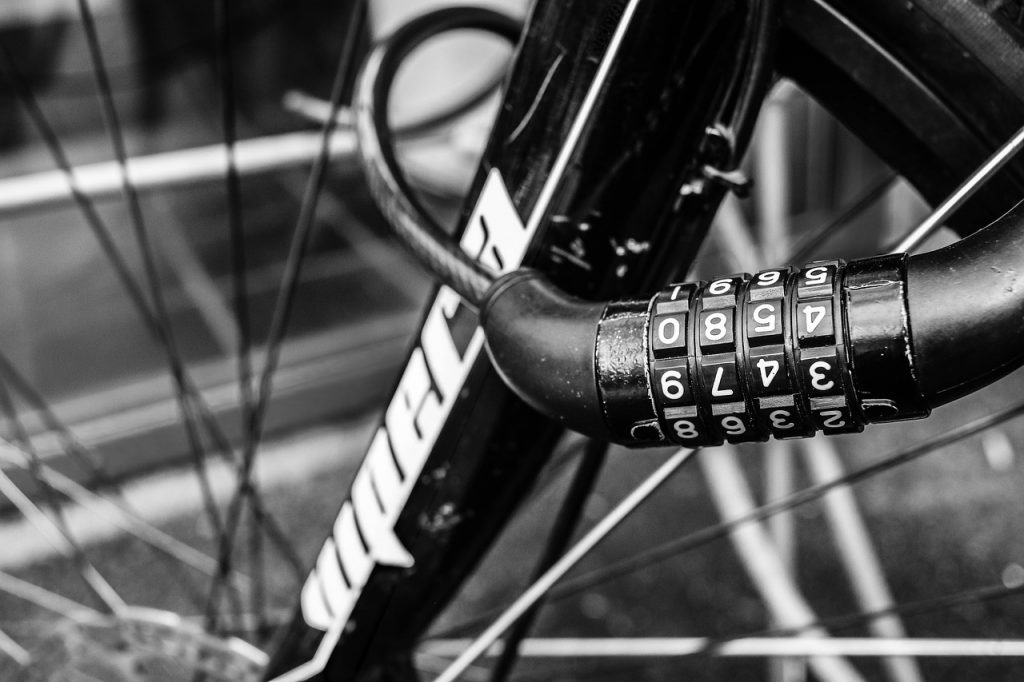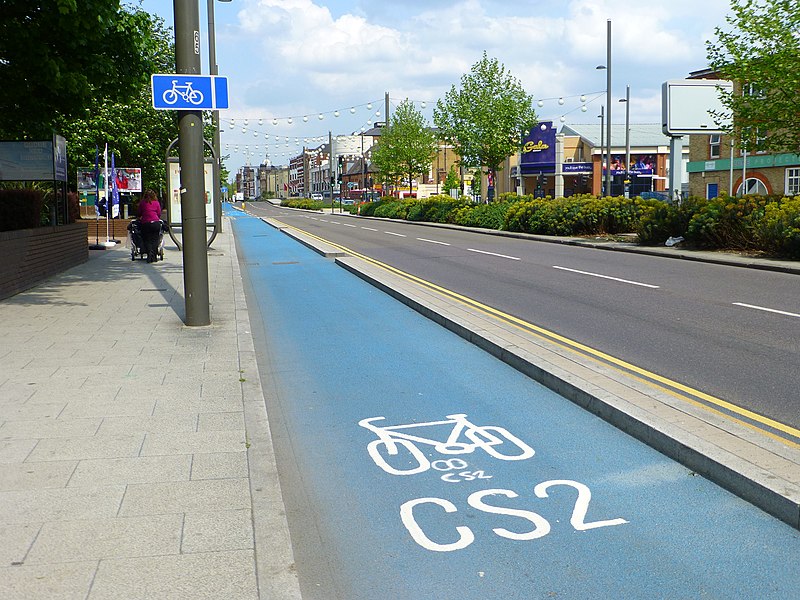Cycle Commuting – Tips For Making It Easy

Over the last few years cycle commuting has grown in popularity. First in 2020 / 2021 as a way to avoid public transport during the Covid pandemic. Then in 2022 with the huge price hike in oil and fuel prices people looked for cheaper ways to travel.
There are also many other advantages to cycle commuting such as:
- Its greener, contributes less traffic, and congestion to the road system and is zero emissions
- Cycle commuters tend to be fitter, healthier and take less time off sick
- The endorphin release from the exercise means that commuters are often more ‘alive’ when reaching their destination
- Freedom to travel at times that are convenient to the commuter
People can be reluctant to try cycle commuting for several reasons. However, with a little forethought, planning and preparation there’s no reason that cycle commuting can’t be as easy and convenient as jumping in a car or on a bus or train. If you’re considering turning your daily journey into a cycle commute then following some of the simple steps below will make your journey much more pleasurable.
Plan your route
Undoubtedly the most important thing to do is plan a route that you’re comfortable doing. The beauty of cycle commuting is that you can use routes inaccessible by other means. If you’re in a town or city there will be cycle paths, side streets, and green spaces available to you. These can be used to both avoid traffic and create a more pleasant and varied landscape. If you’re out of town you may be able to incorporate bridleways and towpaths into your commute. The golden rule is not to stick to the main road route you’re most familiar with. Online services such as RideWithGPS and Google Streetview can help with distance/time estimates and terrain checking etc.
Practice your route
Once you’ve planned your route then maybe try a dry run at a time when you’re not under time pressure. A weekend is a good time to try out a new route. Failing that for the first few times allow far more time than you think you’ll need. This will allow you time to deal with unforeseen routing problems etc and also explore other potential routes. Of course, if you’re very familiar with the area you’re commuting through this may not be necessary.
Plan your arrival
Once you have a route planned and researched it’s time to think about what you will do when you arrive. There are a few essentials that you should consider:
- Does the destination have secure cycle parking facilities?
- Is there somewhere to freshen up? A shower is ideal but if your commute is leisurely you might be able to do without.
- Are there locker facilities to store helmets, rucksacks and other cycling related paraphernalia?
What bike to use?

Cycle commuting can essentially be done on any bike however you should consider several things to make sure the bike is suitable for your purpose. If you need to take lots of things on your commute such as laptops, change of clothing etc then a carbon road bike may not be ideal. You are unlikely to be able to fit a rack so everything will need to go into a rucksack which will be heavy, and potentially uncomfortable. In this example, some sort of hybrid with a pannier rack and bag would be preferable. Conversely, if you don’t need to carry anything and your commute is also going to be a training ride then a carbon road bike might be ideal.
What to wear?
A bit like the bike, what you wear will depend on the weather, how you ride, and what your options are for freshening up at your destination. If you have showering facilities and are using your commute to train then by all means wear lycra and all your normal gear. If your options for freshening up are limited you might want to consider a more leisurely ride and wearing the clothes that you will have to wear for the rest of the day. This may seem a little strange but many people can make this work by not riding too hard so they don’t work up a sweat. Don’t forget to allow for changes in the weather either. Even if it’s dry at the start of the day the weather can change quickly, especially in spring and autumn. Make sure you have options such as rain protection etc available.
What to take?
You may not have much control over some of the luggage you have to carry such as books, laptops etc but there are things you can do to limit what you need to carry. Can you take all of your changes of clothes in on day 1 so you don’t have to carry stuff in every day? What about food – can you buy lunches and snacks at your destination or will you need to carry food. Don’t forget a few tools/spares in case of mechanical problems. At the minimum carry a spare inner tube, pump and tyre levers in case of punctures. (For a more complete list of stuff to carry check out the advice here)
Is there safe storage at the other end?

The last thing you’ll need to consider before starting your commute is whether there is safe storage at your destination. Ideally, you will have access to off-street secure cycle parking. A monitored and locked bike shed is perfect but make sure you also have a strong lock. We would suggest keeping buying a good lock to keep at your destination. Don’t leave your bike chained to a convenient lampost or railing, it will almost certainly get stolen. (For more tips on secure cycle storage read our article here)
This might seem like a lot to think about but most only needs to be done once. The rest will quickly become second nature.
Once you’ve made all your cycle commuting plans etc it’s time to turn your attention to the ride itself and any hazards, obstacles or difficulties you may encounter along the way. It’s highly unlikely you’ll be the only person on your route so we’ll offer some advice here for dealing with everything from articulated lorries to horses.
Pay attention to the road surface
This might seem like an obvious thing to say but there are plenty of examples of people getting injured due to inattention. Even the smoothest of roads can have a pothole, drain cover, grate or other such obstacles to catch out the unwary. Indeed the better the surface the less likely you are to pay attention to it so keep those eyes peeled. If you’re riding off-road stretches on your commute then be aware of the inevitable changes in the surface. You’re likely to encounter hardpack, gravel, loose dirt and maybe even mud depending on the weather conditions and time of year. Bicycle commuting will mean that you’re likely to be carrying luggage so be aware of the changes to bike handling this brings.
Don’t hug the kerb
If you’re riding on the road there is always a temptation to ride too near the kerb. This is a common mistake that new riders frequently make. The area near the kerb is home to all the debris, pushed there by the wheels of motor vehicles. In addition to that, there’s always the danger of clipping the kerb causing an accident. Drivers are also more likely to try to squeeze past narrow gaps when a rider is near the kerb. Keeping a metre or so away from the kerb is always recommended.
Cycle lanes

Cycle lanes are an emotive subject but using a good cycle lane can make cycle commuting a real pleasure. However, a bad one can be downright dangerous so choose carefully. Many larger cities are now starting to create physically segregated lanes. If you’re in London then the Cycle Superhighway network is also painted blue. Just remember that there’s no legal requirement to use a cycle lane. If you think it’s not suitable for your purpose then feel free to use the road.
Parked cars
Treat parked cars with caution. In themselves, they’re not a problem but there may be passengers who open a door into your path. If you are passing cars and can see people in them then give them a wide berth. That way if a door does suddenly open you’ll still be clear of it.
Large vehicles
We’re talking lorries, busses and coaches mainly here. These things have massive blind spots for the drivers especially immediately in front and down the (non-drivers) side of the vehicles. These vehicles are to be given a wide berth at all times. Don’t be tempted to try and sneak up the side of such a vehicle to get to the front of the traffic even if there is a gap to do so. These vehicles have a very wide turning circle and need that gap to make a turning. Much better to stay behind and get to your destination in one piece for the sake of waiting.
Road junctions
Statistically, you’re more likely to be involved in an incident at a road junction so keep your wits about you. Riding well away from the kerb will make you more visible to other road users, especially those pulling out from a side road. Another good technique is to try and make eye contact with other drivers as much as possible. That way you can be assured they’ve registered your presence and will hopefully act accordingly.
Pedestrians
This is especially important in busier towns and cities. Pedestrians these days seem to walk around with their heads buried in their phones and are prone to stepping out onto the road with little attention – keep your wits about you when riding in such circumstances. If you’re riding on trails etc as part of your commute don’t forget you are still likely to meet people. We would fully recommend fitting a bell to any bike you’re intending to use for cycle commuting where it’s likely to be busy.
Horses
If you’re riding off-road or on quiet country roads then you may well encounter horses – the golden rule is ‘slow and wide’. For more information on passing horses see our separate article here.
With a little planning, forethought, and preparation commuting by bike can be a pleasant, stress-relieving and cheap way of travelling. If you’re thinking about giving it a go we can’t recommend it highly enough, it might just give you the spur to get out more on your bike.
If you found this article useful please consider supporting us by buying a tea at www.buymeacoffee.com/cyclinglabs








